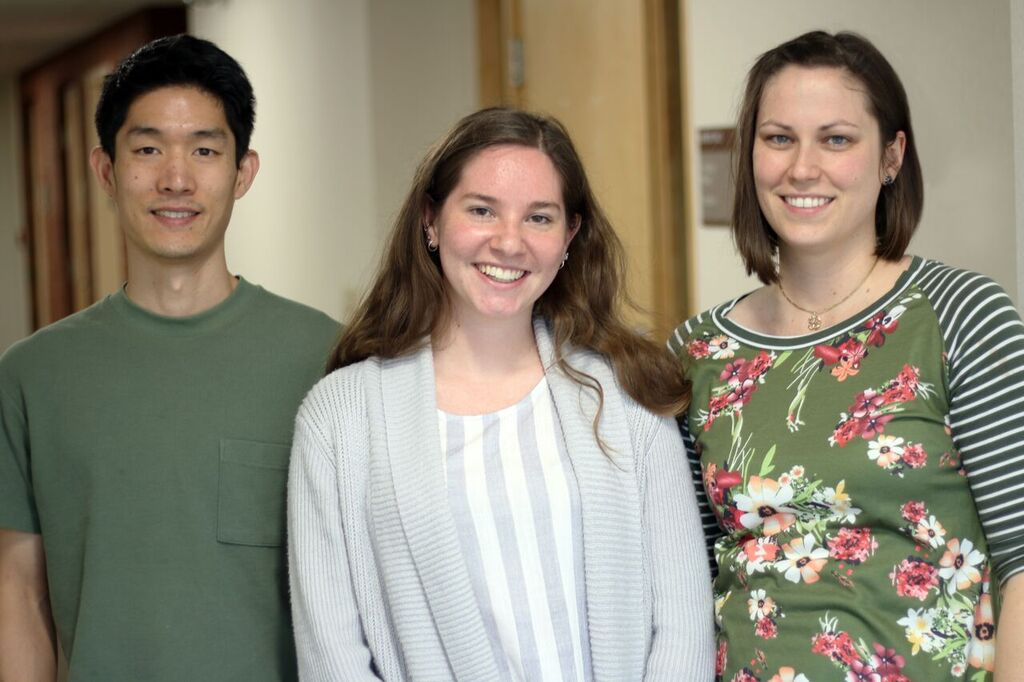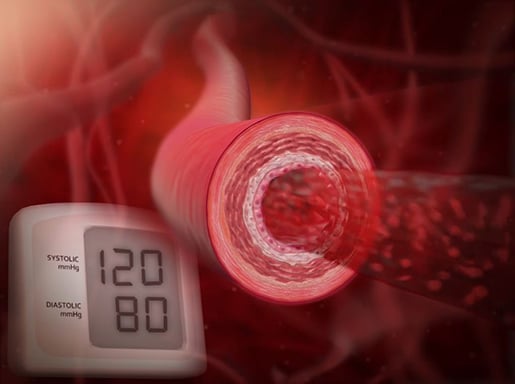Meet the VB Team: The Masterminds of Medical Visualization
Posted on 5/14/19 by Laura Snider and Nick Riley
The biomedical visualization team at Visible Body creates highly visual and interactive 3D models and animations used by students in high school, college and medical school, and by healthcare practitioners all around the world.
In September 2018, an interview with Visible Body medical artist Duc was featured in the career of the month section of the NSTA (National Science Teachers Association) Magazine. We also asked two of Duc’s teammates, Siena and Anne, the same questions.
Here is how these three medical artists got their start, what their work at VB is like, and what they recommend for students interested in art and science.
 From left to right: Duc, Siena, and Anne.
From left to right: Duc, Siena, and Anne.
Deciding to Become a Medical Illustrator
Duc: Drawing comic book characters at the age of ten is what started my interest in learning musculoskeletal anatomy. I would try to memorize and then draw individual muscles. Art and science curricula didn’t overlap in high school but I learned of how they could while in college. With this profession, I get to bring together two subject areas that are really interesting to me.
Siena: While taking biology in high school I realized I was learning a lot of the content through videos and illustrations. My teacher told me that creating these visuals was something I could do as a career. I decided that was what I wanted to do—create scientific and medical visuals to help people better understand scientific content.
Anne: I loved science in high school; by the time I was in college I wanted to be a doctor. As a freshman I took lots of pre-med classes, but I took one art class to have a break from all the studying. I spent all my time in the art room and got a great grade, but my grades in my science classes suffered. I learned about medical illustration and it made much more sense for me [as a career].
Career Path
Duc: I got an undergraduate degree in art with a minor in biology and entered a graduate medical illustration program. That program taught me to be fluent with medical concepts and terminology—which I would then illustrate. When I graduated, my first job was doing medical-legal illustrations for courtroom exhibits. From there, I came to Visible Body to do animations and interactive software development.
Siena: I knew in high school that I wanted to pursue medical illustration after shadowing a medical illustrator at the New England Journal of Medicine. I knew that there were two undergraduate programs with medical art bachelors programs, so I applied to both of them. I also applied to liberal arts colleges that had strong science and art programs, so I could major in art and minor in science, or vice versa. The school I ended up going to was the best fit for me and had a good reputation for its career counseling services. I interned here at Visible Body the summer of my junior year and started working here the year after I graduated.
Anne: My undergraduate degree was in visual arts. It was much more about ‘express yourself through art’ and much less about technical drawing education. I really learned technical drawing skills after I got my undergrad degree and before I applied to a medical illustration graduate program. I spent three months taking figure drawing classes. I used those classes to build my portfolio to get into graduate school to study biomedical communications. My first job was working for a plastic surgeon. That was more of a medical photograph editing job. It was here that I started creating medical artwork.
Current Work
Duc: Recently, I worked on a project that paired CT and MRI scans with 3D models of the brain. You can see the finished work in the latest edition of Human Anatomy Atlas. The work entailed studying the internal structures of the brain, based primarily off of MRI data sets that showed the internal structures of the brain, and creating 3D model representations.
Here are the basic steps to a project:
- Research. We meet with the editorial team, hold meetings with professors and professionals, and research the scientific subject for ourselves from advanced level text references or real medical imaging.
- Sketch out the visual idea. These can be thumbnails, which are like small versions of the idea, or storyboards if it is an animation. The goal here is to visually depict what we are going to build and then share that idea with the larger team to get feedback before starting the project.
- Start the work and go through revisions until the product is complete. This is the most time-consuming stage and is very demanding of us from a software user standpoint. A lot of programs are necessary, and a good understanding of computer graphics is required to iterate through numerous drafts. You have to stay in a multidisciplinary mindset because everything relies on software in addition to traditional art skills.
For all of these steps, we use a team production process that resembles what one might find at a video game company. Visible Body is an educational technology company and everything we create relies a lot on technology. Our production process is always changing because technology is always advancing.
Siena: I learned 3DS Max (a 3D modeling software) when I got here a few months ago and now I’m helping our newest team member learn, and in the process improving my skills. I picked a 3D model I recently finished of a nephron. We are going back through it together, and I am demonstrating the workflow and how we move from the beginning to the final result that will get put into our app.
Anne: I just rebuilt our 3D model of the kidney to add more details. Currently in our apps you can take that model apart into six pieces. In the future, it will be about 23—so, a big increase in detail. I finished the kidney, and now I’m adding more veins and arteries around it so that we have an even more detailed representation of blood supply to and from the kidneys.
 A screenshot from another project Anne is currently working on.
A screenshot from another project Anne is currently working on.
Favorite Part of the Job
Duc: Medical animation is such a specialty field that knowing what you need to learn can be a challenge. I do like that we combine a wide set of skills and tools to work on projects and when those projects are completed, there can be a strong sense of accomplishment. With every project, there is more to learn, which is a fun challenge.
Siena: My favorite is that, like in school, I get to work with different media. I’ve done illustrations, animations, and 3D models. I like that we are multimedia artists. We use lots of tools to get a job done. Before this job, I did freelance work and I could decide on the style. Here it is more of a collaboration.
Anne: I love creating more and better ways to visualize anatomy. I like being the person that helps students and professionals see inside the human body.
Good Things to Know About Being a Medical Artist
Duc: You can apply all you learn in school about illustration and science to medical visualization. I recommend taking science and art classes whenever the opportunity is available. It’s core to the skill set in this multidisciplinary work. You use a lot of the science research techniques taught in school to learn new things. In this field, technology really makes it so art and science evolve quickly and overlap more. For example, there are a lot of raw 3D models of proteins and anatomy which are now freely available online. Years ago, I would idealize these models from scratch. Now you can start with real data sets and enhance them. But you have to know what you are looking at. What I do every day is very closely related to what I learned in school, but how I do it has changed as more technology becomes available.
Siena: We learned a lot in school about science research along with the core of anatomy and physiology, and I use all of that to do my work here. I comb through a lot of information and data to find what is accurate and the approach I want to take. It’s important to take those science courses and to use what you learn about the content and what you learn about researching. It’s also about understanding the basics of drawing like understanding form, light and shadows, color theory, and drawing from life. I use all of these skills I’ve learned to represent anatomy realistically and accurately.
Anne: I’m big on building basic art skills. Before you get your hands on the big expensive 3D programs, you can prepare for them by improving illustration skills. It’s a skill you need to constantly improve. Draw as much as you can. Also very important is the desire to ask questions and the interest to learn more and work on a team. We look for those qualities when we interview potential new team members.
Be sure to subscribe to the Visible Body Blog for more anatomy awesomeness!
Want to see our biomedical visualization team's work in action? Check out our suite of 3D apps!



